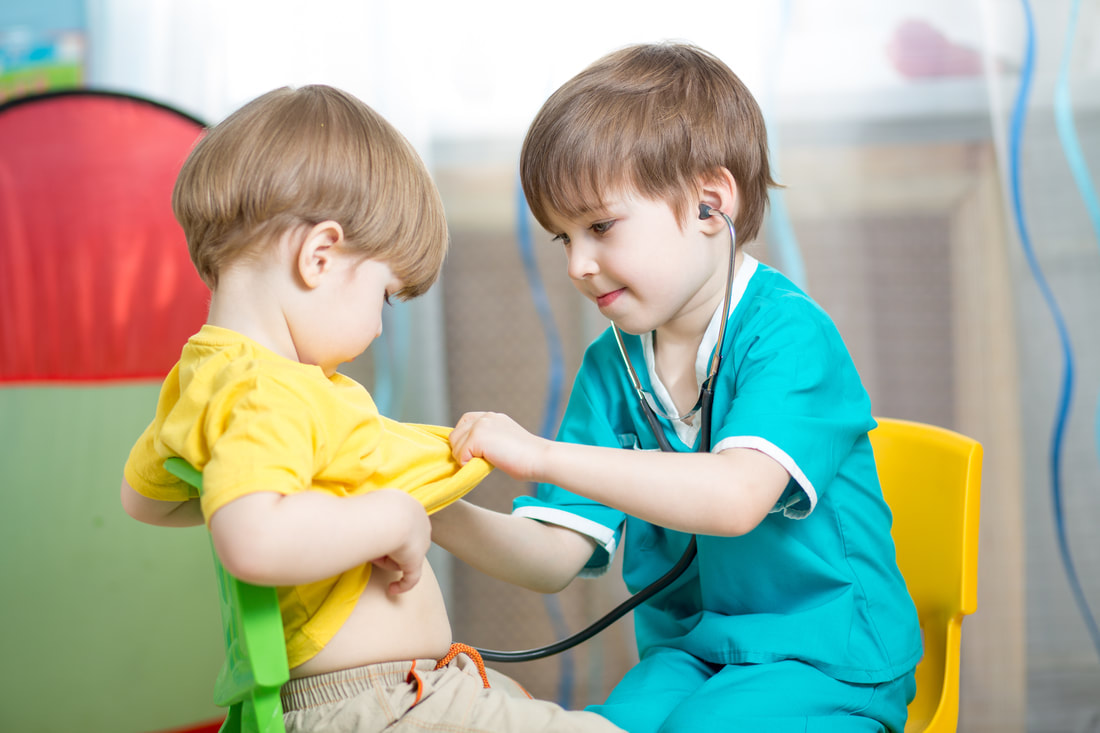Emergency Procedures |
Page 22 |
It can seem like a huge task to plan for any type of emergency that may occur in your child care program - and when all this work is done, I hope you will never have to use your plan for a real emergency. But it is important to have a plan to make sure that staff and children know what to do if an emergency occurs.
Despite reducing risks in the early childhood environment, there will be times when emergencies occur. Earthquakes and other emergencies such as gas leaks, choking, motor vehicle and playground accidents can happen any time. Sometimes chronic illnesses and childhood disease may turn into an emergency. Educators need to be prepared to deal with such emergencies.
In order to provide maximum protection, early childhood educators need to plan for life-threatening emergencies and be trained to deal with them. Your senses are a good tool for recognizing the existence of an emergency. Excessive bleeding, difficulty in breathing, and ingestion of or direct contact with poison always present emergency conditions that require prompt action.
|
Develop and follow your safety policy for emergency procedures. No matter how careful and safety-conscious you are, an injury emergency can still occur. In order to reduce that risk, educators should develop and follow their safety policy for emergency procedures. The policy may cover areas such as planning for basic training, emergency information, emergency back-up, evacuation, first-aid kits and emergency response procedures. Be sure parents know the procedures and cooperate in teaching their children about them.
|
All staff should be aware of any special needs, allergies, etc., of all children in their care, with special care plans accessible for children with special health needs.
In addition to specifying emergency procedures, you should take the following steps to prepare for potential emergencies:
- All staff should be trained in pediatric first aid (including rescue breathing and first aid for choking), prevention of injuries and prevention of infectious disease.
- Maintain a first-aid kit with all needed supplies within easy reach at all times. Keep information where you need it (e.g., place a list of emergency telephone numbers of the children and emergency resources and a copy of your emergency procedures near each telephone for quick reference).
- Have important forms such as parental permission forms accessible.
- Your program should develop a standardized injury report form for reporting all injuries or illnesses that require first aid or additional care. Give one copy of the report to the child’s parent and keep another copy in the child’s folder. Find out which incidents or injuries must be reported to state or local authorities. Child care licensing should have forms available.
Whenever you are faced with an emergency situation, follow these steps:
- Survey the scene. Prevent injuries to the rescuer or messenger.
- Find out what happened. Who is hurt? How? What caused this?
- Check for life-threatening problems.
- Call the Emergency Medical Services (EMS) system (9-1-1) for help if needed.
- Comfort and reassure the victim.
- Check for injury. Do a secondary survey for specific injuries. Look, listen and feel, but do not move the victim.
|
Source: Better Kid Care
Published on Feb 2, 2016 Length: 4:04 |



